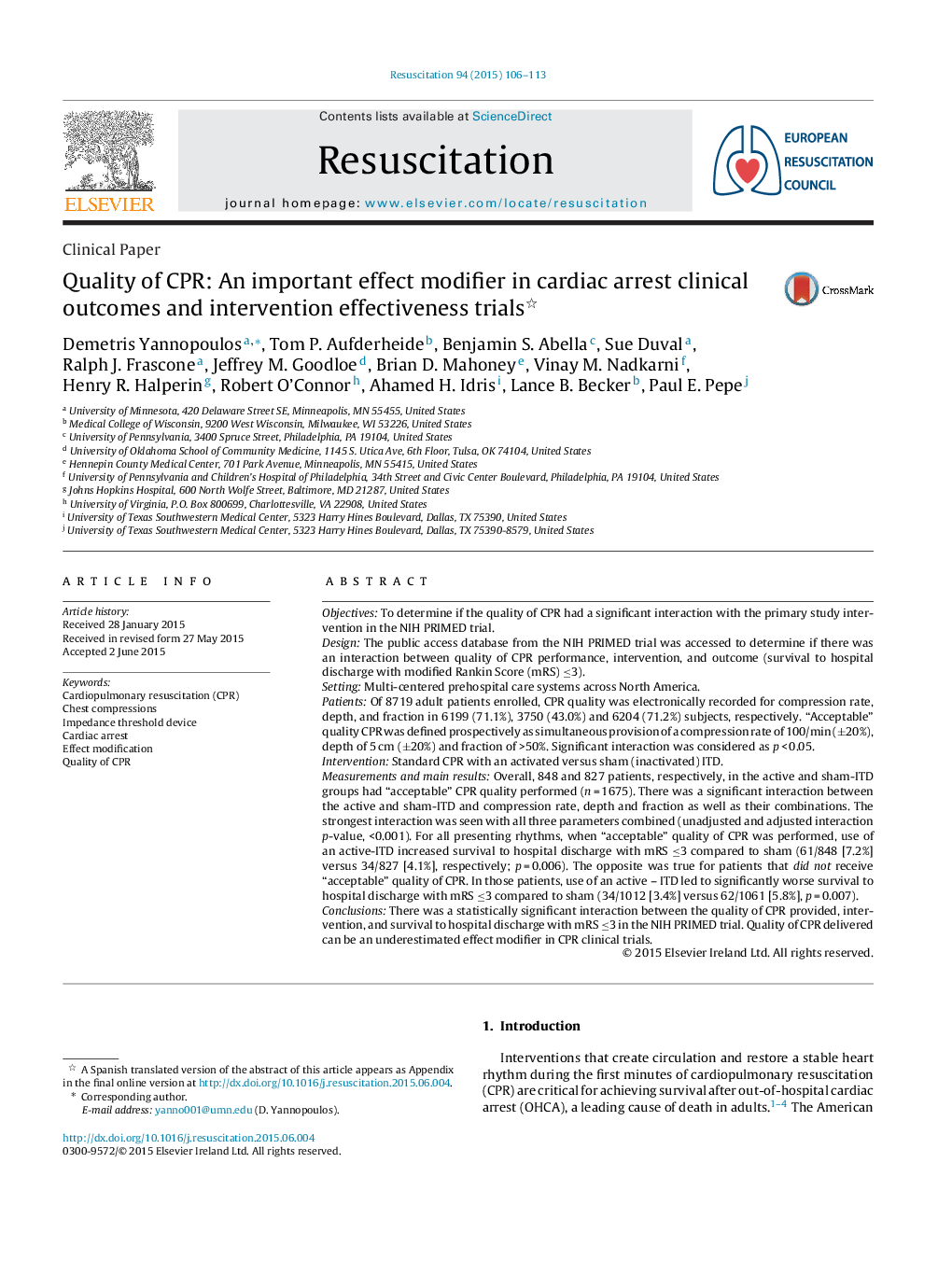| کد مقاله | کد نشریه | سال انتشار | مقاله انگلیسی | نسخه تمام متن |
|---|---|---|---|---|
| 5997722 | 1578990 | 2015 | 8 صفحه PDF | دانلود رایگان |

ObjectivesTo determine if the quality of CPR had a significant interaction with the primary study intervention in the NIH PRIMED trial.DesignThe public access database from the NIH PRIMED trial was accessed to determine if there was an interaction between quality of CPR performance, intervention, and outcome (survival to hospital discharge with modified Rankin Score (mRS) â¤3).SettingMulti-centered prehospital care systems across North America.PatientsOf 8719 adult patients enrolled, CPR quality was electronically recorded for compression rate, depth, and fraction in 6199 (71.1%), 3750 (43.0%) and 6204 (71.2%) subjects, respectively. “Acceptable” quality CPR was defined prospectively as simultaneous provision of a compression rate of 100/min (±20%), depth of 5 cm (±20%) and fraction of >50%. Significant interaction was considered as p < 0.05.InterventionStandard CPR with an activated versus sham (inactivated) ITD.Measurements and main resultsOverall, 848 and 827 patients, respectively, in the active and sham-ITD groups had “acceptable” CPR quality performed (n = 1675). There was a significant interaction between the active and sham-ITD and compression rate, depth and fraction as well as their combinations. The strongest interaction was seen with all three parameters combined (unadjusted and adjusted interaction p-value, <0.001). For all presenting rhythms, when “acceptable” quality of CPR was performed, use of an active-ITD increased survival to hospital discharge with mRS â¤3 compared to sham (61/848 [7.2%] versus 34/827 [4.1%], respectively; p = 0.006). The opposite was true for patients that did not receive “acceptable” quality of CPR. In those patients, use of an active - ITD led to significantly worse survival to hospital discharge with mRS â¤3 compared to sham (34/1012 [3.4%] versus 62/1061 [5.8%], p = 0.007).ConclusionsThere was a statistically significant interaction between the quality of CPR provided, intervention, and survival to hospital discharge with mRS â¤3 in the NIH PRIMED trial. Quality of CPR delivered can be an underestimated effect modifier in CPR clinical trials.
Journal: Resuscitation - Volume 94, September 2015, Pages 106-113